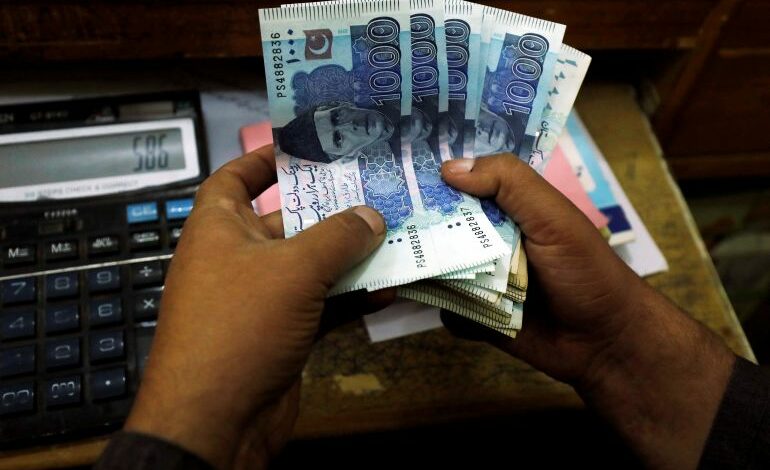Will Pakistan’s IMF agreement save its economy?

The International Monetary Fund’s board approved a $3bn bailout programme for Pakistan on Wednesday, which includes the immediate disbursal of about $1.2bn to help stabilise the South Asian country’s economy.
Pakistan and the fund reached a staff-level agreement last month, securing a short-term pact, which got more funding than expected for the country of 230 million facing an acute balance of payments crisis.
The bailout had been on hold since December when the IMF refused to release a critical $1.1bn part of the loan because of the country’s lack of compliance with a 2019 agreement signed between the IMF and former Prime Minister Imran Khan.
The release of funds comes amid longstanding fears the country would default, providing much-needed relief to the incumbent government.
However, the agreement with the international lender also means strict conditions when it comes to spending and structural reforms that are likely to further increase economic hardship for many common people.Why was the IMF bailout needed?
Pakistan’s economy has been in dire straits, hit by a balance of payments crisis as it attempted to service high levels of external debt and crushing inflation.
Prior to the bailout, the country’s foreign reserves were teetering at around $4bn, an amount good enough to cover a month’s worth of imports, although Pakistan banned some of the imports to save dollars.
According to analysts, the country needs at least $20bn in the next two years to pay back foreign loans with interest.
Earlier this year, the Pakistani rupee dove to a historic low against the US dollar after an exchange cap was lifted as the cash-strapped nation sought to unlock the vital IMF bailout.
“The absence of foreign exchange could have resulted in massive shortages of fuel, food, medicine and other items. Things are likely to improve now – as the currency will stabilise and inflation will slowly come down in the short to medium term,” Khizr said.
In February, Global rating agency Moody’s cut Pakistan’s sovereign credit rating by two notches to ‘Caa3’, saying the country’s increasingly fragile liquidity “significantly raises default risks”. According to local media outlet Express Tribune, more than 750,000 people left Pakistan in 2022, a threefold increase from the previous year.
What is the IMF asking for?
Islamabad has taken a number of steps demanded by the IMF since its mission arrived in Pakistan in February, including revising its 2023-24 budget and raising its policy rate to 22 percent in recent weeks.
The Washington-based international lender also got Pakistan to raise more than 385 billion Pakistani rupees ($1.34bn) in new taxation to meet the IMF’s fiscal adjustments. The IMF has said the central bank should remain proactive to reduce inflation and maintain a foreign exchange framework.
The adjustments have already fuelled all-time high inflation of 38 percent year-on-year in May, the highest in Asia.
Meanwhile, reforms in the energy sector, which has accumulated nearly 3.6 trillion Pakistani rupees ($12.58bn) in debt, have been a cornerstone of the IMF talks.










